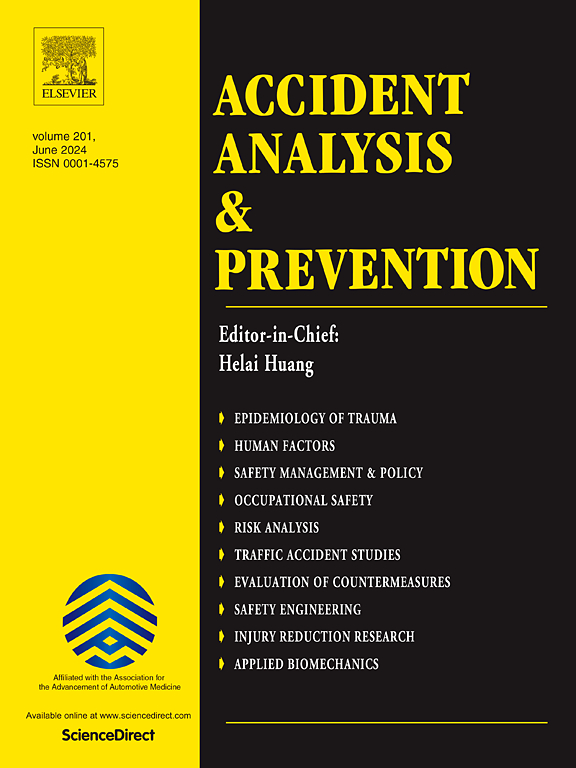A deep transfer learning approach for Real-Time traffic conflict prediction with trajectory data
IF 5.7
1区 工程技术
Q1 ERGONOMICS
引用次数: 0
Abstract
Recently, real-time traffic conflict prediction has drawn increasing attention due to its significant potential in proactive traffic safety systems. While various statistical and machine learning models have been developed for conflict prediction, transferability remains a fundamental issue across these models. Specifically, the predictive performance of a real-time conflict prediction model developed for a specific location can significantly decline when directly applied to a new location without any modifications, primarily due to substantial differences in traffic environments between these areas. To address this gap, this study proposed a novel deep transfer learning approach aimed at enhancing the transferability of real-time conflict prediction models. Initially, a real-time conflict prediction framework was designed utilizing trajectory data for merging areas with consideration of temporal variations in traffic flow characteristics. Subsequently, the Gated-Transformer, Fully Convolutional Networks (FCN), Long Short-Term Memory Fully Convolutional Networks (LSTM-FCN), and Multivariate Long Short-Term Memory Fully Convolutional Networks (MLSTM-FCN) were employed as backbone feature extraction networks to capture the hidden correlations between time-varying traffic flow characteristics and traffic conflicts. After that, an independent transfer learning architecture was established to assess the similarity of the distribution of traffic flow characteristics at different locations, based on the maximum mean discrepancy criteria. For empirical evaluation, merging areas from the exiD dataset were differentiated into source and target domains. The results demonstrated that the Gated-Transformer model outperforms other baseline models (FCN, LSTM–FCN and MLSTM–FCN) in both feature extraction and predictive performance, achieving an F1 score of 0.864 and an area under the curve (AUC) of 0.980. Furthermore, the transfer learning architecture can substantially enhance the predictive performance of a model trained in the source domain when applied to the target domain. In particular, the F1 score and AUC for the Gated-Transformer model improved by 11.9% and 10.2%, respectively, after incorporating the transfer learning architecture. Finally, the optimal values of key model parameters, including the sliding time window (6 s) and the prewarning time (5 s), were recommended for practical applications through sensitivity analysis. This study illustrates the potential of the deep transfer learning approach as a reliable and effective alternative to improve the transferability of real-time conflict prediction models. Additionally, results from this study can offer valuable insights for practical applications in traffic safety warning systems, particularly in vehicle-to-infrastructure traffic environments.
求助全文
约1分钟内获得全文
求助全文
来源期刊

Accident; analysis and prevention
Multiple-
CiteScore
11.90
自引率
16.90%
发文量
264
审稿时长
48 days
期刊介绍:
Accident Analysis & Prevention provides wide coverage of the general areas relating to accidental injury and damage, including the pre-injury and immediate post-injury phases. Published papers deal with medical, legal, economic, educational, behavioral, theoretical or empirical aspects of transportation accidents, as well as with accidents at other sites. Selected topics within the scope of the Journal may include: studies of human, environmental and vehicular factors influencing the occurrence, type and severity of accidents and injury; the design, implementation and evaluation of countermeasures; biomechanics of impact and human tolerance limits to injury; modelling and statistical analysis of accident data; policy, planning and decision-making in safety.
 求助内容:
求助内容: 应助结果提醒方式:
应助结果提醒方式:


